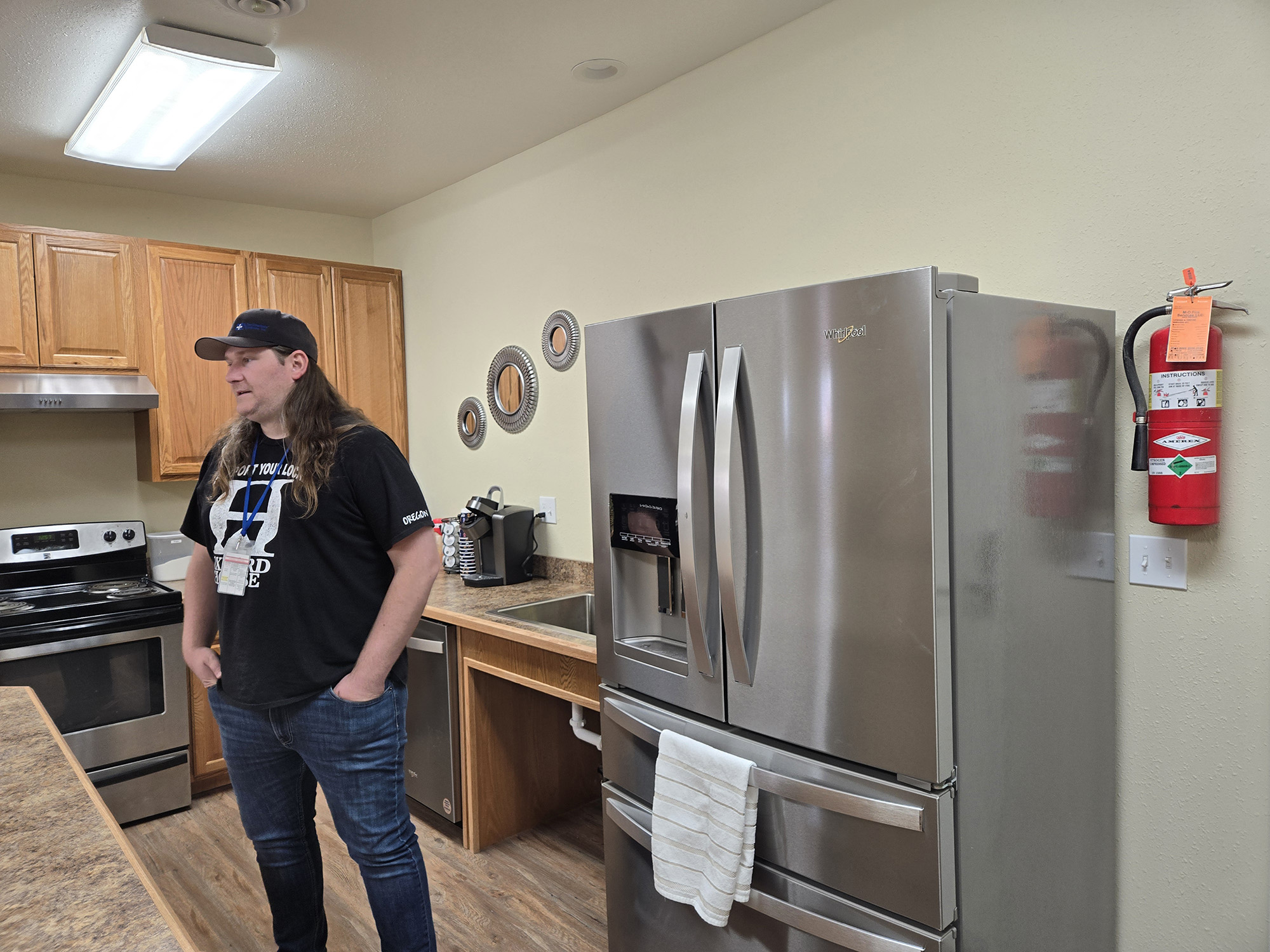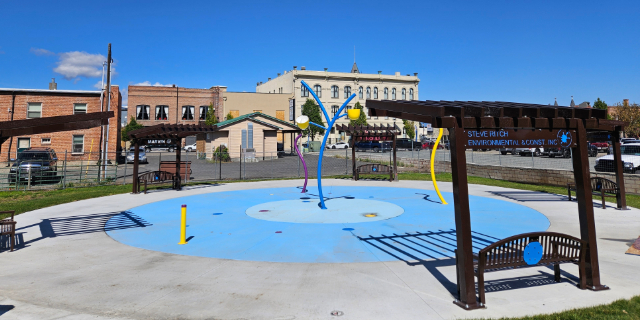Into the lair of the hare
Published 1:00 pm Saturday, January 29, 2022

- Jayson Jacoby
We drove to the mountains on a recent Sunday, seeking sunshine and snow that isn’t crusted with ice that clatters underfoot with an unpleasant cacophony.
We found both.
We also found a few things that greatly desired not to be found and that are quite cunning at concealment — snowshoe hares.
Going up the mountains in search of fair weather reverses the normal sequence of things, of course.
Elevated ground is more likely in all seasons to be cloaked in cloud, even when the valleys below bask in the beneficent rays.
But occasionally the atmosphere gets mixed up.
Although in reality it’s the lack of mixing that results in what meteorologists call an “inversion” — and for which the rest of us tend to reserve more piquant, and possibly profane, terms.
This temporary confounding of the common weather conditions — that is, the temperature drops the higher you climb — comes about most often during winter, and the explanation lies, in part, with the nature of cold air.
It’s heavy — heavier, at any rate, than a parcel of warmer air.
And just as water will inundate low ground, so will chilly air, left to its own devices, pool in a valley (although we tend to think of air as a gas and thus notably different from water, in fact air, in the way it flows and is affected by topography and gravity, behaves much as a liquid does).
This is why it’s better — or at least warmer — to pitch your tent on a hummock than in a hollow.
Most of the time the atmosphere is sufficiently roiled that air doesn’t have a chance to settle in, like an unwanted houseguest who is blithely unaware of how obnoxious his presence is.
A persistent wind can keep air moving along in most cases.
But even when winds are gentle, air tends to move vertically so long as air near the ground is comparatively warm and thus buoyant.
(This same phenomenon, known generally as “instability,” also can fuel thunderstorms. A parcel of air will continue to rise so long it’s warmer than the surrounding air, and if it goes high enough it’s likely to condense into clouds, since cooler air can hold less moisture in suspension, and potentially congeal into electrically charged thunderheads.)
The initial ingredients for an inversion include clear skies and light winds. In winter, this combination in our region’s valleys usually causes temperatures to plunge. Clouds act as a sort of blanket, holding the heat that the ground absorbs from sunlight. When clouds disperse, that heat can more readily rise, leaving a relatively thin layer of chilly air near the ground.
The second key factor is somewhat warmer air moving in higher in the atmosphere. This warmer air acts as a lid, trapping the cold air in the valleys.
And an immensely effective lid it is, one that’s essentially leakproof.
The captured cold air has no physical means by which to rise, since it will collide with a layer of air above that’s warmer and, more to the point, less dense.
Imagine standing at the bottom of the deep end of a swimming pool and trying to throw a baseball, which is more dense than the surrounding water, so that it breaches the surface with much velocity.
Northeastern Oregon’s dramatic topography exacerbates the inversion effect. On New Year’s Eve, which was both clear and nearly windless, I watched the exterior thermometer on my Toyota drop from 2 degrees to 6 below zero in just a mile or so of driving in the middle of Baker Valley, a vertical distance of less than 100 feet.
I don’t particularly mind this aspect of inversions.
But I abhor another common effect which, I think, is largely responsible for the inversion’s sordid reputation — clouds.
The skim of frigid air, if it’s stranded for more than a couple days in valleys, tends to become damp, in part because its moisture, which it acquires from a variety of sources, ranging from our exhalations to snow on the ground, has no place to go. And because the air is cold it can’t hold much water vapor, so clouds, and in many cases fog, quickly form.
Baker Valley went through this progression last week.
The morning of Jan. 22 was bright and beautiful, if seasonably chilly, in Baker Valley. Keating Valley, by contrast, was socked in with fog much of the day.
But the next morning, Jan. 23, the fog also enveloped Baker Valley.
I checked temperatures that morning and the inversion was unusually intense. At 7 a.m. the temperature at the Baker City Airport, elevation 3,373 feet, was 23 degrees. At the same time at the top of the chairlift at Anthony Lakes, elevation 8,000 feet, it was 40 degrees.
In more typical atmospheric conditions, the temperature at 8,000 feet could be expected to be from 16 to 23 degrees colder — not 17 degrees warmer — than at 3,373 feet.
(As a general rule, the temperature drops from 3.5 degrees to 5 degrees for every 1,000 feet of altitude gained.)
The overcast layer during an inversion rarely extends higher than about 5,000 feet, so I figured we could find sunshine somewhere along the road to Anthony Lakes Ski Area.
We saw the first wedge of blue sky gleaming amidst the muck while we were driving past the Gorham Butte Road, just a few miles up from the valley.
Our destination was a couple miles farther, where the highway describes a half circle just before the turnoff to the Anthony Creek Road. There’s a large parking area on the south side of the highway here.
We were above the overcast but, at about 5,100 feet, we hadn’t gone high enough to get out of the chilly layer. It was 21 degrees when we started.
I thought about driving farther, maybe to the Van Patten Lake trail, which starts at about 6,300 feet, but my wife, Lisa, figured we would warm up easily enough once we started into the woods on our snowshoes.
Our kids, Olivia, 14, and Max, 10, were with us, and I had picked this place because the terrain is relatively gentle.
The conditions, Lisa and I agreed, were nearly ideal for snowshoeing.
Although we pegged the snow depth at around 30 inches, it had consolidated quite a lot over the previous two, mainly dry, weeks.
There was a thin crust but it was covered with an inch or two of powder — from the minor storm a few days earlier — that absorbed most of the shock from each stride.
More pleasantly, the scrim of fresh snow prevented our steps from making the horrific racket that plastic snowshoes are capable of when clattering against ice.
We had walked just a hundred feet or so into the forest when we noticed the distinctive tracks of snowshoe hares — two larger prints, side by side, in front, and two smaller marks at the rear, sometimes parallel, sometimes beside each other.
The snow was imprinted with veritable hare highways.
We spotted three of these furry forest dwellers in the hour or so we hiked.
Snowshoe hares — the name inspired by their large and fuzzy rear feet, which have a similar flotation effect as snowshoes do — swap their reddish brown summer coat for the fine winter camouflage of white hair.
(Mostly white, anyway — the tips of their ears are black year round.)
They are of course difficult to spot when they’re standing still atop the snow. And the hares are quite adept being motionless, as well they should be when any passing coyote or bobcat would surely relish making a meal of one.
Or lynx, the predator for whom the snowshoe hare is the most common prey. Lynx haven’t been officially confirmed around here for decades, but if any of these big cats wanders through the area where we snowshoed I doubt it would suffer hunger pangs.
I saw two hares, and Max one.
In each case the animals were betrayed only by their movement. Two of the three sprinted away and were gone within a couple seconds, reminding me, with their great graceful leaps and instantaneous changing of direction, of their cousins, the jackrabbits.
The third was hunkered in a hollow beneath a log.
I noticed its slight shift, presumably to get farther below the snow-burdened log. Once it went still I had trouble finding it again even though I knew essentially where it was.
After 10 seconds or so, just long enough for all of us to have a look, the hare leaped out of its dubious shelter — at least I imagine it would be dubious in the face of a determined coyote — and disappeared between the lodgepole pines and tamaracks and grand firs and Douglas-firs in this classic Blue Mountains mixed-conifer forest.
It was the sort of day when snowshoeing seems the perfect mode of winter transportation rather than the lung- and heart-straining slog it can be when the snow lies deep and soft.
Our shoes sank in just a few inches, enough to ensure we were warm but not drenched in sweat.
Max and Lisa noticed a curious tree that I had missed — probably distracted by another set of hare tracks.
It was a short and slender tree, not much taller than Max, but the snow, which no doubt came down fast and thickly here earlier in the month, had congealed around its crown in a nearly perfect, and quite wide, circular mound.
Lisa called it the “cake pop tree,” and indeed it quite resembled those confections.
Where we turned around, on a road that parallels the power line leading to the ski area, I noticed a scattering of Douglas-fir cones, maybe three dozen in all, reminding me of nothing so much as the smattering of flotsam that marks the margin of a flood tide.
I noticed that there was scarcely a square inch of snow not trodden by the tracks of squirrels. I looked up and saw a big fir on the slope, maybe 100 feet above. I suppose a heavy wind had deposited this nutritious litter. I imagined the squirrels that must have felt such joy as squirrels can feel when they came upon this treasure, so accessible, with no climbing required.
I guess it could have been a trap, a ruse devised by the ever-cunning coyote.
But the tracks were fresh, made since the last snowfall, and I saw no blood, so perhaps this was indeed the scene of a feast for squirrels, but not of them.





